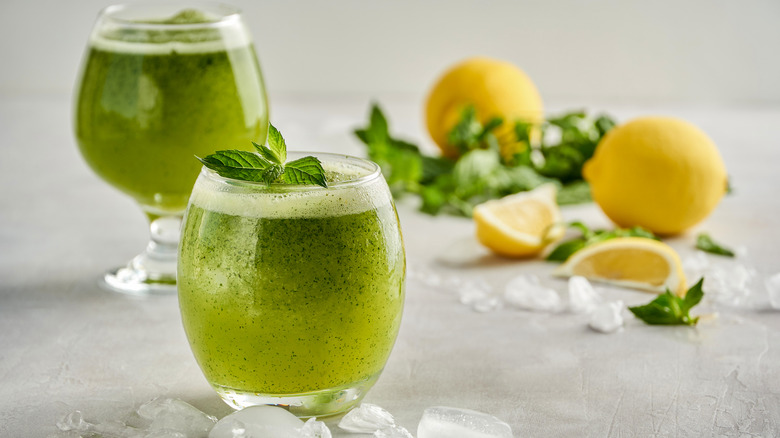What Makes Egyptian-Style Lemonade Different From Other Varieties?
Lemonade is one of those drinks where no two recipes are truly the same. Take Egyptian-style lemonade -– more commonly known in Egypt and throughout the Middle East as "limonana" –- which puts a unique spin on the classic recipe you might be familiar with by combining the delicious tartness of citrus, fresh herbal notes, and a layer of creaminess. The ingredients, flavors, and the blending of all the ingredients come together to create a delicious variation of lemonade that stands out from its Western counterparts — though is similar to Brazilian lemonade as it also packs a creamy twist.
A classic American lemonade is a simple recipe that mixes together lemon juice, sugar syrup, and cold water. So what makes Egyptian-style lemonade so different? Well, for starters, it doesn't call for any lemons at all. You heard us right! This recipe drops the lemons and instead opts for limes, which form the base flavor.
Another big difference is the crucial inclusion of milk and mint. Rather than mixing your ingredients together, you'll have to get your blender out for a truly traditional Egyptian-style lemonade. All you've gotta do is pop in the whole lime (rind and all!), milk, granulated sugar, cold water, and your mint leaves. Blitz those delicious ingredients all together and pour through a strainer to capture any stray pulp.
Serve each glass chilled with ice to enhance limonana's uniquely refreshing qualities. The final product is a delicious, creamy, fresh drink that gives you that classic hit of sourness and brightness -– making it the perfect drink to quench your thirst on a hot summer day. It's just like Israel's mint lemonade but with that extra luxuriousness from the milk.
Other unique styles of lemonade variations to try
If you fancy broadening your lemonade-making horizons, there are countless other regional variations you can explore. Another popular recipe that drops the lemons entirely in favor of limes is Brazilian-style lemonade, locally known as limonada suíça. This tropical recipe blends together whole limes, sugar, and water. The blended mix should then be strained to remove any pulp before being stirred in with sweetened condensed milk. Condensed milk is a versatile ingredient to have in your kitchen arsenal and will add a creamy layer of sweetness to your lemonade that'll be sure to cool you off on a hot day.
In the Philippines, Filipino lemonade is made using calamansi juice. Calamansi are smaller variations of limes that pack a more pronounced citrusy punch. The flavor of calamansi is often said to be a well-rounded mixture of sweet limes and oranges, offering a unique and delicious blend of tartness and sweetness. Filipino lemonade calls for a no-fuss recipe -– all you've gotta do is mix your calamansi juice with sugar and water. Then just sit back, relax, and enjoy.
If you're a lemonade purist and want a unique variation that at the very least contains lemons, Turkish lemonade — or Limonata — has got all your lemony cravings covered. This recipe combines lemon juice, sugar, and water alongside a splash of herbal extract, such as mint, to add a refreshing spin to your lemonade, giving it a unique edge over more classic recipes.


